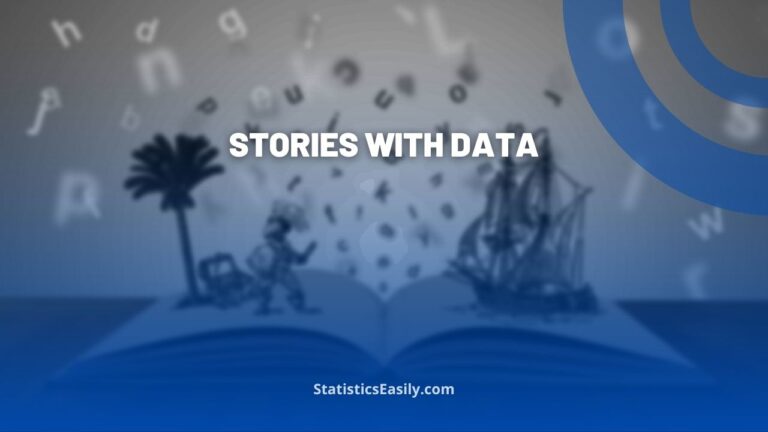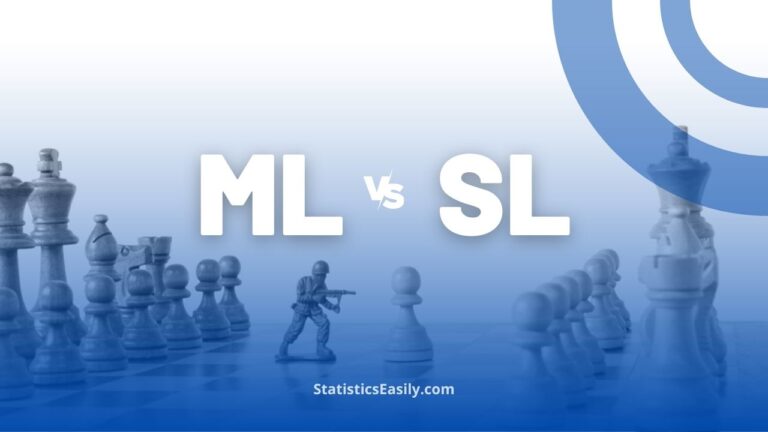Confounding Variables in Statistics: Strategies for Identifying and Adjusting
You will learn to master confounding variables in statistics for accurate research outcomes.
Introduction
In scientific research, statistics stand as the backbone, providing the framework for gathering, analyzing, and interpreting data in a structured and meaningful method. Within this scientific discipline, the concept of confounding variables emerges as a critical element that researchers must adeptly manage to ensure the integrity of their analyses. Confounding variables in statistics represent external influences that can distort the relationship between the independent and dependent variables under study, potentially leading to erroneous conclusions if not correctly identified and adjusted for. This introduction underscores the importance of statistical methods not just as a tool for data analysis but as a fundamental approach to preserving the accuracy and reliability of research findings. Through a focused discussion on confounding variables, this article aims to equip researchers with the strategies necessary to navigate these challenges, thereby enhancing the quality and validity of their scientific endeavors.
Highlights
- Identifying confounding variables improves research accuracy.
- Adjusting methods like stratification clarify data analysis.
- Correctly identified confounding variables reveal actual effects.
- Multivariate analysis helps handle multiple confounders.
- Avoid common pitfalls in confounding variable adjustment.
Ad Title
Ad description. Lorem ipsum dolor sit amet, consectetur adipiscing elit.
Understanding Confounding Variables in Statistics
At the core of statistical analysis lie the confounding variables, which signify elements outside the experimental design that can alter the perceived relationship between studied variables. A confounding variable is a third variable that influences the dependent and independent variables, leading to a potential misinterpretation of the cause-and-effect relationship.
Definition and Examples
A confounding variable, often hidden within the context of a study, can significantly impact the research outcome if not correctly identified and accounted for. For instance, age can act as a confounding variable in a study examining the relationship between exercise and heart health. Older individuals might exercise less and have poorer heart health, not directly because of the lack of exercise but because of their age. Without adjusting for age, the study might incorrectly attribute heart health status directly to exercise frequency, overlooking the age factor.
The Distinction Between Confounding Variables, Independent Variables, and Dependent Variables
- Independent Variables: Researchers manipulate these variables to observe their effect on the dependent variables. In the study above, the independent variable would be exercise frequency.
- Dependent Variables: These variables are the outcomes that researchers measure to see if the independent variables have had an effect. In the study example, heart health status serves as the dependent variable.
- Confounding Variables: Unlike independent or dependent variables, confounding variables are not directly part of the study’s focus but still influence the outcome. The key distinction lies in their ability to affect independent and dependent variables, potentially skewing the results. Their identification and adjustment are crucial for the accuracy of the study’s conclusions.
Understanding and adequately addressing confounding variables are paramount in ensuring the validity of research findings. Researchers must meticulously design their studies to identify potential confounders beforehand or use statistical methods to adjust for their impact. This careful consideration underscores the intricate nature of statistical analysis and the diligence required to uncover genuine relationships between variables, reinforcing the pursuit of truth and clarity in scientific research.
The Impact of Confounding Variables in Statistics
The influence of confounding variables on research findings cannot be overstated. If not identified and controlled early in the research process, these variables can significantly skew results, leading to incorrect conclusions.
Detailed Examples of Skewed Research Findings
Consider a study aimed at evaluating the effectiveness of a new educational strategy on student performance. If researchers fail to account for students’ prior knowledge level, this unmeasured variable could act as a confounder. Students with higher prior knowledge might perform better not solely because of the new educational strategy but due to their pre-existing knowledge level. Without adjusting for this, the study could falsely attribute the improved performance to the educational strategy alone.
In another scenario, research on the health benefits of a particular diet might neglect the confounding effects of exercise habits. Suppose individuals on the diet are more likely to engage in regular physical activity. In that case, it’s challenging to disentangle the diet’s benefits from those of exercise. This oversight can lead to the erroneous belief that the diet alone improves health.
The Importance of Identifying Confounding Variables Early
Early identification of confounding variables is crucial for several reasons:
- Study Design: Knowing potential confounders helps design the study to eliminate their effect or plan for statistical adjustments.
- Data Collection: With an understanding of confounders, researchers can collect data on these variables, ensuring adjustments can be made during the analysis phase.
- Statistical Analysis: Identification allows for applying techniques such as stratification, matching, or regression to control for the confounding effect, leading to more valid conclusions.
Failing to identify and adjust for confounding variables can lead to false positives (type I errors) and missed genuine associations (type II errors). This oversight undermines the study’s validity and can misguide subsequent research, policy, and practice.
The early stages of research planning are therefore critical. They set the groundwork for recognizing and addressing confounding variables, ensuring reliable and actionable conclusions. This vigilant approach to research design and analysis is fundamental in pursuing empirical truths, reinforcing the integrity of scientific inquiry.
Identifying Confounding Variables in Statistics
Identifying confounding variables is a critical step in ensuring the validity of research findings. This section outlines strategies and techniques for effectively identifying these variables, supported by illustrative case studies.
Strategies and Techniques
1. Literature Review: A thorough examination of existing research can reveal potential confounders impacting similar studies. This foundational step helps anticipate issues before data collection begins.
2. Expert Consultation: Engaging with subject matter experts can uncover less obvious confounding variables that might not be immediately apparent to those less familiar with the specific research area.
3. Pilot Studies: Conducting preliminary research can help identify unexpected confounders, allowing researchers to adjust their study design or data collection methods accordingly.
4. Statistical Analysis: Techniques such as correlation matrices or factor analysis can help identify variables related to both the independent and dependent variables, suggesting potential confounding.
5. Graphical Causal Models: Drawing diagrams that map out the expected relationships between variables can help researchers visually identify potential confounders.
Case Studies
Identifying confounding variables in statistics requires a multifaceted approach that combines rigorous preparatory research, consultation with experts, and flexible study design.
Public Health: The Relationship Between Smoking and Lung Cancer
Early research on the relationship between smoking and lung cancer had to meticulously account for a range of confounding factors, including age, occupational hazards, and air pollution, to isolate the actual effect of smoking on lung cancer risk. A landmark in this field was the British Doctors Study, initiated by Sir Richard Doll and Sir Austin Bradford Hill in the 1950s, which provided convincing evidence of the link between cigarette smoking and lung cancer. Reference: Doll, R., & Hill, A.B. (1950). Smoking and carcinoma of the lung. Preliminary report. British Medical Journal, 2(4682), 739-748.
Environmental Science: The Harvard Six Cities Study on Air Pollution
The Harvard Six Cities Study is a pivotal piece of research investigating air pollution’s health effects across six U.S. cities. This study stood out for its rigorous approach to controlling for confounding variables, including socioeconomic status, access to healthcare, and lifestyle factors, to assess the impact of air pollution on health outcomes accurately. Reference: Dockery, D.W., Pope, C.A., Xu, X., Spengler, J.D., Ware, J.H., Fay, M.E., Ferris, B.G., & Speizer, F.E. (1993). An association between air pollution and mortality in six U.S. cities. New England Journal of Medicine, 329(24), 1753-1759.
Educational Psychology: Evaluation of the One Laptop per Child Program
In educational psychology, the evaluation of the One Laptop per Child (OLPC) program serves as a notable example of research that had to navigate the complexities of confounding variables. Researchers had to consider factors such as students’ prior academic performance, socioeconomic background, and teachers’ technological proficiency to accurately determine the program’s effectiveness in enhancing learning outcomes. Reference: Cristia, J., Ibarrarán, P., Cueto, S., Santiago, A., & Severín, E. (2017). Technology and Child Development: Evidence from the One Laptop per Child Program. American Economic Journal: Applied Economics, 9(3), 295-320.
The above case studies demonstrate the importance of this process in different research contexts, underscoring the need for vigilance and thoroughness to uncover and adjust for these pivotal variables. This careful consideration and adjustment for confounders not only enriches the integrity of the research but also contributes to the broader pursuit of truth, enhancing the scientific endeavor’s contribution to society.
Adjusting for Confounding Variables
Adjusting for confounding variables is a critical step in ensuring the integrity of research findings. This section explores various methods used for this purpose and their advantages and disadvantages, supported by practical examples.
Adjusting Methods for Confounding Variables
1. Stratification: This method divides the study population into strata, or subsets, based on the confounding variable(s). Analysis is then performed within each stratum to assess the relationship between the independent and dependent variables.
- Pros: Allows for direct comparison within homogeneous groups.
- Cons: It may not be practical with multiple confounding variables due to the large number of strata needed.
Example: In a study on the effects of diet on heart disease, researchers could stratify participants by age groups to control for the confounding effect of age.
2. Matching: This technique involves pairing each participant in the treatment group with a participant in the control group with a similar value for the confounding variable(s).
- Pros: Reduces the confounding variable’s effect, making the groups more comparable.
- Cons: Finding a perfect match for each participant can be challenging and may lead to the exclusion of unmatched participants.
Example: In clinical trials comparing two medications, researchers might match patients based on their baseline health conditions.
3. Regression Analysis: A statistical method that estimates the relationship between variables while controlling for confounding variables.
- Pros: Can handle multiple confounders simultaneously and provides quantitative estimates of the relationship between variables.
- Cons: Assumes a specific form of the relationship and requires appropriate model selection.
Example: In educational research examining the impact of a new teaching method, regression analysis could be used to control for students’ prior academic performance and socioeconomic status.
Practical Considerations
- Stratification is most effective when the number of confounders is small and their impact is significant. It’s instrumental in observational studies where randomization is not possible.
- Matching is ideal for case-control studies or when a clear comparison group is needed. It ensures that a comparison between similar groups regarding the confounder(s) is made.
- Regression Analysis is versatile and widely applicable, making it a popular choice for researchers with complex data sets. However, it requires a careful selection of variables and an understanding of the underlying statistical assumptions.
Advanced Topics
Two critical areas demand attention in advancing the study of confounding variables in statistics: understanding interaction effects and the application of multivariate analysis. These topics delve into the complexities of confounding variables, offering sophisticated strategies for disentangling their effects from those of primary interest.
Interaction Effects in the Context of Confounding Variables
Interaction effects occur when the effect of one variable on the outcome depends on the level of another variable. Recognizing and analyzing interaction effects in the context of confounding variables is crucial, as they can reveal nuanced relationships that simple adjustments might miss.
- Example: Consider a study on the effectiveness of a new teaching method on student learning outcomes, where socioeconomic status (SES) is a confounding variable. If the teaching method’s effectiveness varies by SES, an interaction effect might be present, suggesting that the method benefits students differently based on their SES.
- Strategies for Analysis: To assess interaction effects, researchers can use:
- Stratified analysis to compare the effects across different levels of a confounding variable.
- Multivariate regression models that include interaction terms between the treatment and confounding variables.
- Pros and Cons: While identifying interaction effects can provide deeper insights into the data, it also requires larger sample sizes and more complex analyses. The interpretation of these effects demands careful consideration, as they can complicate understanding the primary relationships under study.
Introduction to Multivariate Analysis in Dealing with Multiple Confounding Variables
Multivariate analysis encompasses a range of statistical techniques designed to handle multiple variables simultaneously. Multivariate analysis becomes invaluable when dealing with multiple confounding variables, allowing researchers to adjust for several confounders in a single model.
- Techniques: Commonly used multivariate techniques include:
- Multiple regression analysis for continuous outcomes.
- Logistic regression for binary outcomes.
- Cox proportional hazards models for time-to-event data.
- Example: In public health research studying the impact of an intervention on disease prevention, multiple confounders such as age, lifestyle factors, and genetic predispositions can influence the outcome. Multivariate regression allows researchers to estimate the intervention’s effect while controlling for these confounders.
- Pros and Cons: Multivariate analysis can adjust for multiple confounders simultaneously, providing a more accurate estimate of the primary relationship. However, it requires assumptions about the form of relationships between variables and careful selection of the model. Misapplication can lead to incorrect conclusions.
Practical Implications
Understanding and adjusting confounding variables through interaction effects and multivariate analysis represent advanced strategies requiring meticulous planning, data collection, and analysis. These methods empower researchers to unveil more accurate and nuanced insights into their data, fostering a deeper understanding of the underlying phenomena. However, the sophistication of these techniques necessitates a high level of statistical expertise and a careful consideration of their assumptions and limitations.
By embracing these advanced topics, researchers commit to a rigorous exploration of truth, navigating the complexities of confounding variables with precision and clarity. This pursuit not only enhances the validity of scientific findings but also contributes to the broader objectives of disseminating accurate and meaningful knowledge.
Best Practices and Common Pitfalls
Navigating the complex landscape of confounding variables in statistics requires a meticulous approach to research design and analysis. This section outlines the best practices to minimize the effects of confounding variables and the common pitfalls to avoid.
Best Practices in Research Design
Thorough Literature Review: Before embarking on your study, extensively review existing literature to identify potential confounding variables previously encountered in similar research. This step can inform your study design and data collection strategy.
Pre-Study Consultation: Engage with subject matter experts and statisticians during the planning phase. Their insights can help identify potential confounders and suggest appropriate adjustment methods.
Design for Adjustment: Whenever possible, design your study to allow for the control of confounding variables. This might include stratification in the design phase or ensuring that data on potential confounders is collected.
Use of Randomization: In experimental studies, randomization can help distribute confounding variables evenly across study groups, reducing their potential impact.
Statistical Controls: When confounding variables are identified, statistical methods such as regression analysis control their effects on the outcome measures.
Common Pitfalls and How to Avoid Them
Ignoring Confounders in the Design Phase: Failure to consider confounding variables at the outset can lead to flawed conclusions. Avoid this by incorporating confounder identification into the initial planning stages of your research.
Overlooking Interaction Effects: Not accounting for how confounding variables might interact with primary variables can obscure true relationships. Address this by testing for interaction effects in your statistical analysis.
Reliance on Observational Data Without Adjustment: Observational studies are prone to confounding. Mitigate this risk by using statistical techniques to adjust for known confounders.
Misinterpreting Correlation as Causation: A standard error is to assume a direct cause-and-effect relationship without considering potential confounding variables. Avoid this by conducting a thorough analysis that includes tests for confounding influences.
Inadequate Sample Size: A sample size that is too small may not allow for effective control of confounding variables, particularly in stratified analyses. Ensure your study is adequately powered to account for these adjustments.
Implementing the Practices
By adhering to these best practices and being mindful of common pitfalls, researchers can significantly enhance the validity of their findings. It begins with recognizing the omnipresence of confounding variables in research and committing to a rigorous, methodical approach to their identification and control. This commitment elevates the quality of individual studies. It contributes to the reliability and integrity of scientific knowledge as a whole.
Ad Title
Ad description. Lorem ipsum dolor sit amet, consectetur adipiscing elit.
Conclusion
Understanding and adjusting for confounding variables in statistics is not just a methodological necessity; it’s a cornerstone of ethical and reliable research. The journey through statistical analysis is fraught with potential missteps, where confounding variables lurk as hidden influencers of outcomes and interpretations. This article has navigated the essentials of identifying, understanding, and adjusting for these variables, highlighting their critical role in preserving the integrity and accuracy of research findings. As the landscape of data and its analysis continues to evolve, so must our vigilance and commitment to learning. Researchers are encouraged to remain curious, always seeking to deepen their understanding of statistical methods and to be vigilant in their application. By embracing a mindset of ongoing learning and meticulous attention to the nuances of data analysis, we can ensure that our research reaches and maintains the highest standards of scientific integrity.
Recommended Articles
Discover more about mastering data analysis and enhancing your research integrity. Explore related articles on our blog to deepen your understanding of statistics.
- Ice Cream and Polio: Understanding Correlation vs Causation
- ANOVA versus ANCOVA: Breaking Down the Differences
- Correlation vs Causation: Understanding the Difference
- What is an Independent Variable in an Experiment?
- Correlation vs Causation: The Critical Divide (Story)
Frequently Asked Questions (FAQs)
Q1: What are confounding variables in statistics? They are variables that influence both the independent and dependent variables, causing a spurious association.
Q2: Why is identifying confounding variables crucial in research? Identifying them is critical to eliminating false correlations and ensuring the validity and reliability of research findings.
Q3: How can confounding variables be identified? Through careful study design, statistical analysis, and reviewing existing literature on the research topic.
Q4: What are standard methods to adjust for confounding variables? Strategies include stratification, matching, and regression analysis to control for the effects of confounders.
Q5: Can confounding variables be eliminated? While they can’t always be eliminated, careful methodological design can significantly reduce their impact.
Q6: How does multivariate analysis help in dealing with confounding variables? It allows for the analysis of multiple variables simultaneously, helping to isolate the effect of the variable of interest.
Q7: What are the risks of not adjusting for confounding variables? Failing to adjust can lead to misleading conclusions, impacting the credibility and applicability of research findings.
Q8: Are there any specific fields where confounding variables are more prevalent? They are common in observational studies across various fields, including medicine, epidemiology, and social sciences.
Q9: How can one ensure their research design minimizes the effect of confounding variables? By planning for potential confounders from the outset and choosing appropriate statistical methods for adjustment.
Q10: Can confounding variables affect experimental studies? Even in controlled experiments, unrecognized confounders can influence outcomes, underscoring the need for vigilant research design.








